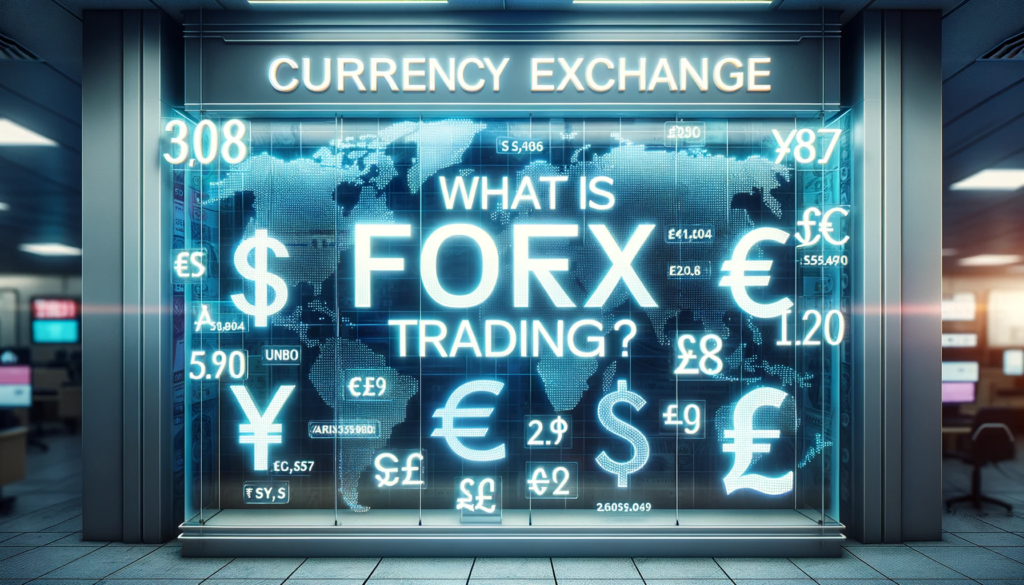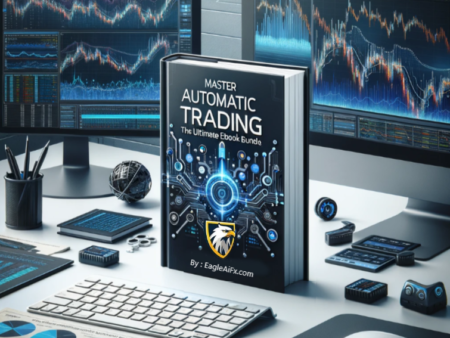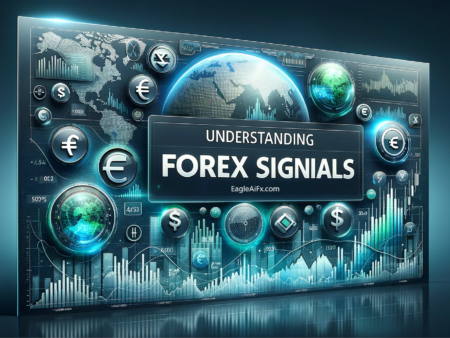Table of Contents
Introduction
Forex, or foreign exchange, trading is a financial market where individuals, businesses, and institutions buy and sell currencies. With a daily trading volume exceeding $6 trillion, the Fx trade market is the largest and most liquid financial market globally.
This market operates 24 hours a day, five days a week, facilitating the conversion of one currency into another. Forex trading is vital in the global economy, enabling international trade and investments.

Historical Background of Forex Trading
Ancient Times: The rudiments of Forex trading can be traced back to ancient civilizations, where currency exchange facilitated trade across regions. As money and currency systems evolved, so did the complexity and scope of exchange operations.
The Gold Standard (1870s-1944): The Gold Standard era marked a significant phase, where currencies were pegged to a specific amount of gold. This system engendered a degree of stability in exchange rates, fostering a conducive environment for international trade.
The Bretton Woods System (1944-1971): Post-World War II, the Bretton Woods System emerged, anchoring major currencies to the US Dollar, which was, in turn, pegged to gold. This system aimed to prevent competitive devaluations and promote economic stability. However, it collapsed in 1971, paving the way for free-floating currency systems.
Modern Fx Trade Market: The advent of free-floating exchange rates marked the birth of the modern Forex trading. Technology played a crucial role, with online trading platforms revolutionizing the way traders accessed the market. Significant milestones, like the introduction of the Euro in 1999 and the effects of various financial crises, further molded the Forex landscape.
Importance of the Fx Trade Market on the Economy
Facilitation of International Trade: At its core, the Forex trading enables international trade by allowing businesses to convert one currency to another. Exchange rates, determined by the market, play a crucial role in trade dynamics, influencing competitiveness and trade balances.
Capital Markets and Investment: The Forex market interlinks with capital markets, affecting foreign direct investment (FDI) and portfolio investments. Exchange rate movements can significantly impact investor confidence and cross-border investment flows.
Monetary Policy and Exchange Rate Management: Central banks often engage in the Forex market to implement monetary policy. Through interventions, they can influence exchange rates, subsequently affecting inflation and interest rates.
Economic Stability: Countries maintain foreign exchange reserves to buffer against economic shocks. A robust Fx trade market aids in maintaining economic stability by facilitating balance of payments and aiding in the management of economic crises.
Global Economic Integration and Forex Market: The interconnection of global economies is partly facilitated by the Forex trading market. Economic blocks and regional trade agreements further intertwine economies, with the Forex trading market playing a pivotal role in this global economic integration.
Understanding Forex Trading
- Currency Pairs: Forex trading involves currency pairs, where you are buying one currency and selling another. The currencies are quoted in pairs, like EUR/USD or GBP/JPY. The first currency in the pair is the ‘base’ currency, and the second is the ‘quote’ or ‘counter’ currency.
- Major, Minor, and Exotic Pairs:
- Major pairs: Include the most traded currencies paired with the US Dollar, like EUR/USD, USD/JPY, and GBP/USD.
- Minor pairs: Include less traded currency pairs that do not include the US Dollar, like EUR/GBP.
- Exotic pairs: Include a major currency paired with a currency from a developing economy, like USD/TRY (US Dollar/Turkish Lira).
- Market Participants: The Forex market comprises various participants, including retail traders, institutional investors, banks, and governments.
- Trading Platforms: Traders use online platforms provided by brokers to access Fx trading. These platforms offer various tools to analyze price movements and execute trades.
Forex Basic Fundamental Aspects & Terminology
- Currency Pairs:
- The Foreign Exchange market operates on the basic principle of trading one currency for another, leading to the concept of currency pairs. Each pair comprises a base currency and a quote currency. The price of the pair represents how much of the quote currency is needed to purchase one unit of the base currency.
- Major Pairs:
- Major currency pairs are the most traded pairs in the Forex market, typically comprising the US Dollar paired with other dominant currencies. Examples include:
- EUR/USD (Euro/US Dollar)
- USD/JPY (US Dollar/Japanese Yen)
- GBP/USD (British Pound/US Dollar)
- Major currency pairs are the most traded pairs in the Forex market, typically comprising the US Dollar paired with other dominant currencies. Examples include:
- Minor Pairs:
- Minor pairs don’t include the US Dollar but involve other highly traded currencies. These pairs are less liquid than major pairs, but still hold significance in the market. Examples include:
- EUR/GBP (Euro/British Pound)
- EUR/AUD (Euro/Australian Dollar)
- Minor pairs don’t include the US Dollar but involve other highly traded currencies. These pairs are less liquid than major pairs, but still hold significance in the market. Examples include:
- Exotic Pairs:
- Exotic currency pairs consist of one major currency and one currency from a developing or emerging-market economy. These pairs are less liquid and have wider spreads. Examples include:
- USD/TRY (US Dollar/Turkish Lira)
- EUR/ZAR (Euro/South African Rand)
- Exotic currency pairs consist of one major currency and one currency from a developing or emerging-market economy. These pairs are less liquid and have wider spreads. Examples include:
- Pips and Lots:
- A pip is the smallest price movement possible in a currency pair, often representing a one-digit movement in the fourth decimal place. In Forex trading, currencies are usually priced to four decimal places.
- A lot, on the other hand, is the standard unit size of a transaction. The standard lot size is 100,000 units of the base currency, though there are also mini (10,000) and micro (1,000) lot sizes.
- Forex Quotes:
- Forex quotes represent the price of one currency in relation to another and are displayed in two forms: direct and indirect. A direct quote shows the domestic currency per unit of the foreign currency, while an indirect quote shows the foreign currency per unit of the domestic currency.
- Ask: An ask, also known as an offer, represents the minimum price at which a trader is prepared to purchase a currency.
- Bid: A bid denotes the price at which a trader is ready to sell a currency.
- Contract for Difference: A Contract for Difference (CFD) is a financial derivative that allows traders to speculate on price fluctuations of currencies, without the necessity of owning the actual asset.
- Leverage: Forex market leverage entails utilizing borrowed funds to amplify potential returns. Characterized by high leverage ratios, the Forex market enables traders to significantly enhance their positions.
- Regulation: The Forex market is decentralized, but brokers and platforms are regulated by financial authorities in their respective countries. It’s crucial to choose a reputable broker to mitigate risks.
- Risks: Forex trading involves significant risks, including market risk, leverage risk, and interest rate risk. It’s essential to have a sound risk management strategy to protect your capital.
- Analysis: Successful Forex trading requires analysis to predict currency movements. Traders use technical analysis, fundamental analysis, or a combination of both to make informed trading decisions
Forex Market Participants
The Forex market, with its vast landscape, hosts a myriad of participants, each with unique objectives and impact. From individual retail traders to powerful central banks, the array of market participants is diverse. This article delineates the key players in the Forex market, shedding light on their roles and influences in the bustling world of currency trading.
- Retail Traders:
- Definition and Background:
- Introduction to retail traders as individual investors in the Forex market.
- Common platforms and tools used by retail traders.
- Objectives and Strategies:
- Various trading styles – day trading, swing trading, position trading.
- Risk management practices among retail traders.
- Definition and Background:
- Institutional Traders:
- Definition and Background:
- Overview of institutional traders, including hedge funds, pension funds, and proprietary trading firms.
- The scale and scope of operations.
- Objectives and Strategies:
- Long-term vs short-term investment strategies.
- Impact on market liquidity and price discovery.
- Definition and Background:
- Banks and Financial Institutions:
- Definition and Background:
- Role of commercial and investment banks in the Forex market.
- Other financial institutions such as insurance companies and brokerage firms.
- Objectives and Strategies:
- Currency conversion for commercial transactions.
- Proprietary trading and market making.
- Definition and Background:
- Governments and Central Banks:
- Definition and Background:
- Role of government bodies and central banks in the Forex market.
- Influence on monetary policy and exchange rates.
- Objectives and Strategies:
- Exchange rate management and monetary policy implementation.
- Interventions in the Forex market to stabilize or increase the value of their national currency.
- Definition and Background:
- Interplay Among Market Participants:
- Dynamics Between Participants:
- How the actions of one group of participants affect others.
- Interdependence and competition among market participants.
- Market Manipulation Concerns:
- Historical instances of market manipulation.
- Regulatory measures to ensure market fairness and transparency.
- Dynamics Between Participants:
Common Forex Trading Strategies & Techniques
Forex trading is akin to navigating a vast ocean, where the waves are driven by myriad factors ranging from economic indicators to global events. Successful navigation through this financial sea requires adept analysis, which comes in three primary forms: Technical, Fundamental, and Sentiment Analysis. Below outline some critical analysis techniques, offering a comprehensive view of how traders can harness them to make informed trading decisions.
- Technical Analysis:
- Definition and Essence:
- Technical analysis revolves around the study of historical price data and trading volumes to forecast future price movements.
- Emphasis on charting tools, indicators, and patterns.
- Key Tools and Concepts:
- Charts (Candlestick, Bar, Line)
- Trend Analysis (Support and Resistance, Trendlines)
- Indicators (Moving Averages, RSI, MACD)
- Advantages and Limitations:
- Quick decision-making, visualization of price action.
- Limitation: Disregard for external economic or political factors.
- Definition and Essence:
- Fundamental Analysis:
- Definition and Essence:
- Fundamental analysis focuses on the intrinsic value of currencies through the examination of economic, social, and political factors.
- Analysis of economic indicators, interest rates, and geopolitical events.
- Key Tools and Concepts:
- Economic Indicators (GDP, Unemployment Rate, Inflation)
- Political Stability and Economic Performance
- Central Bank Actions and Policies
- Advantages and Limitations:
- Understanding of long-term currency value trends.
- Limitation: May not provide precise entry and exit points.
- Definition and Essence:
- Sentiment Analysis:
- Definition and Essence:
- Sentiment analysis gauges the mood of the market by analyzing the collective behavior of market participants.
- Assessment of market sentiment using surveys, indicators, or open interest data.
- Key Tools and Concepts:
- Commitment of Traders (COT) Report
- Market Sentiment Indicators
- Social Media and News Analysis
- Advantages and Limitations:
- Insight into prevailing market biases.
- Limitation: May not always align with fundamental and technical analysis.
- Definition and Essence:
- Integrating Analysis Techniques:
- Multi-Dimensional Analysis:
- Combining technical, fundamental, and sentiment analysis for a holistic market view.
- Example scenarios of how integrated analysis can lead to better trading decisions.
- Continuous Learning and Adaptation:
- The importance of staying updated with evolving analysis tools and market conditions.
- Resources for enhancing analysis skills.
- Multi-Dimensional Analysis:
Forex Trading Trading Hours
The Forex market, unlike its counterparts in equities and commodities, operates around the clock, offering traders a unique opportunity to trade at almost any time of the day. Its 24-hour nature is a result of the global distribution of major Forex trading centers across various time zones. This article elucidates the Forex market hours across different regions, helping traders optimize their strategies to capitalize on the market’s dynamics.
- Overview of Forex Market Hours:
- The Forex market opens on Monday morning in the Asia-Pacific region and continues through to Friday evening in North America.
- Trading hours are typically divided into three main sessions: Asian, European, and North American sessions.
- Asian Session:
- Tokyo:
- Opens at 12:00 AM GMT and closes at 9:00 AM GMT.
- As one of the first major markets to open, Tokyo sees a significant amount of trading activity.
- Sydney:
- Opens at 10:00 PM GMT (previous day) and closes at 7:00 AM GMT.
- Often seen as the gateway to the trading day, with a particular focus on Pacific-Rim currencies.
- Tokyo:
- European Session:
- London:
- Opens at 8:00 AM GMT and closes at 4:00 PM GMT.
- As a major financial hub, London’s session is one of the most active, with the highest trading volume.
- Frankfurt:
- Opens at 7:00 AM GMT and closes at 3:00 PM GMT.
- Frankfurt’s session is also crucial, given Germany’s significant role in the global economy.
- London:
- North American Session:
- New York:
- Opens at 1:00 PM GMT and closes at 10:00 PM GMT.
- The overlap with the European session results in high liquidity and volatility.
- New York:
- Session Overlaps:
- The overlaps between sessions, particularly the London and New York overlap, are often the most active trading hours with heightened liquidity and price movement.
- Impact on Traders:
- Understanding the market hours and their overlaps can help traders identify optimal times to trade.
- Liquidity, volatility, and trading volume vary across different sessions, affecting the behavior of currency pairs.
Forex Trading Chart
Trading charts are vital for both novice and seasoned traders to make informed decisions. Below information seeks to unfold the history and utility of three primary Forex trading charts: Line Charts, Bar Charts, and Candlestick Charts, aiding traders in harnessing these tools for successful trading exploits.

- Line Charts:
- Historical Overview:
- Line charts are perhaps the simplest form of charting, tracing their origins back to basic graph plotting where the price is plotted against time.
- Usage:
- Line charts are created by connecting closing prices over a specific time frame.
- They provide a clear visualization of the general price movement over time.
- Ideal for long-term trend analysis and identifying overarching market direction.
- Historical Overview:
- Bar Charts:
- Historical Overview:
- Evolving from the simple line chart, bar charts emerged to provide more information to traders, encapsulating price movements within specific time frames.
- Usage:
- A single bar represents the high, low, open, and close of a currency pair for a given period.
- The top and bottom of the bar denote the highest and lowest prices, while the horizontal lines on either side represent the opening and closing prices.
- Bar charts are suitable for analyzing the volatility of the price and the comparative performance within different time frames.
- Historical Overview:
- Candlestick Charts:
- Historical Overview:
- Originating from Japan over 200 years ago, candlestick charts have become a staple in modern technical analysis, providing a visual representation of price movements.
- Usage:
- Similar to bar charts, candlestick charts depict the open, high, low, and close of a currency pair for a given period.
- They differ in visual representation, where a filled (or colored) body represents the range between the opening and closing prices, while the ‘wicks’ represent the high and low.
- Traders employ candlestick charts to identify patterns and potential trend reversals, making them highly valuable for short-term trading strategies
- Historical Overview:
Forex Brokers & Regulations
Forex brokers act as intermediaries, facilitating traders’ access to the market. However, the broker-trader relationship and the broader market are heavily governed by laws and regulations to ensure fairness, transparency, and integrity. Below information sheds light on the role of Forex brokers and delves into the key forex regulatory frameworks governing the Forex market.
- Forex Brokers:
- Role and Functions:
- Forex brokers provide platforms for individuals and institutions to trade currencies.
- They offer various services including market analysis, trading tools, and educational resources.
- Types of Brokers:
- ECN Brokers: Offer direct access to the interbank market, providing better transparency and usually lower spreads.
- Market Makers: Provide liquidity by buying and selling currencies, usually having a dealing desk.
- STP Brokers: Route orders directly to liquidity providers, offering a balance of transparency and lower costs.
- Role and Functions:
- Regulatory Framework:
- Purpose:
- Forex regulations aim to create a transparent and fair trading environment, protecting investors from fraud and market manipulation.
- Key Regulatory Bodies:
- United States: Commodity Futures Trading Commission (CFTC) and National Futures Association (NFA)
- Europe: Financial Conduct Authority (FCA) in the UK, and Cyprus Securities and Exchange Commission (CySEC) in Cyprus.
- Asia: Monetary Authority of Singapore (MAS) and Japan Financial Services Agency (JFSA)
- Purpose:
- Compliance and Ethical Practices:
- Broker Registration:
- Forex brokers are required to register with the regulatory bodies in the regions they operate.
- Adherence to Standards:
- Brokers must adhere to standards regarding capital adequacy, record-keeping, and fair pricing.
- Broker Registration:
- Impact of Regulations on Traders and Brokers:
- Protection of Traders:
- Regulations help in protecting traders from fraudulent practices and ensuring fair trading.
- Operational Transparency:
- Regulatory compliance necessitates brokers to maintain transparency in their operations, fostering trust.
- Protection of Traders:
- Challenges and Evolving Regulations:
- Keeping Up with Changes:
- The dynamic nature of the global economy necessitates continual updates to Forex regulations.
- Cross-Border Regulations:
- The international nature of Forex trading poses challenges in cross-border regulatory compliance.
- Keeping Up with Changes:
Conclusion
Engaging in Forex trading requires a solid understanding of the market dynamics, analysis methods, and risk management practices. By educating themselves and choosing reputable brokers, traders can better navigate the complex yet potentially rewarding landscape of the Forex market.











